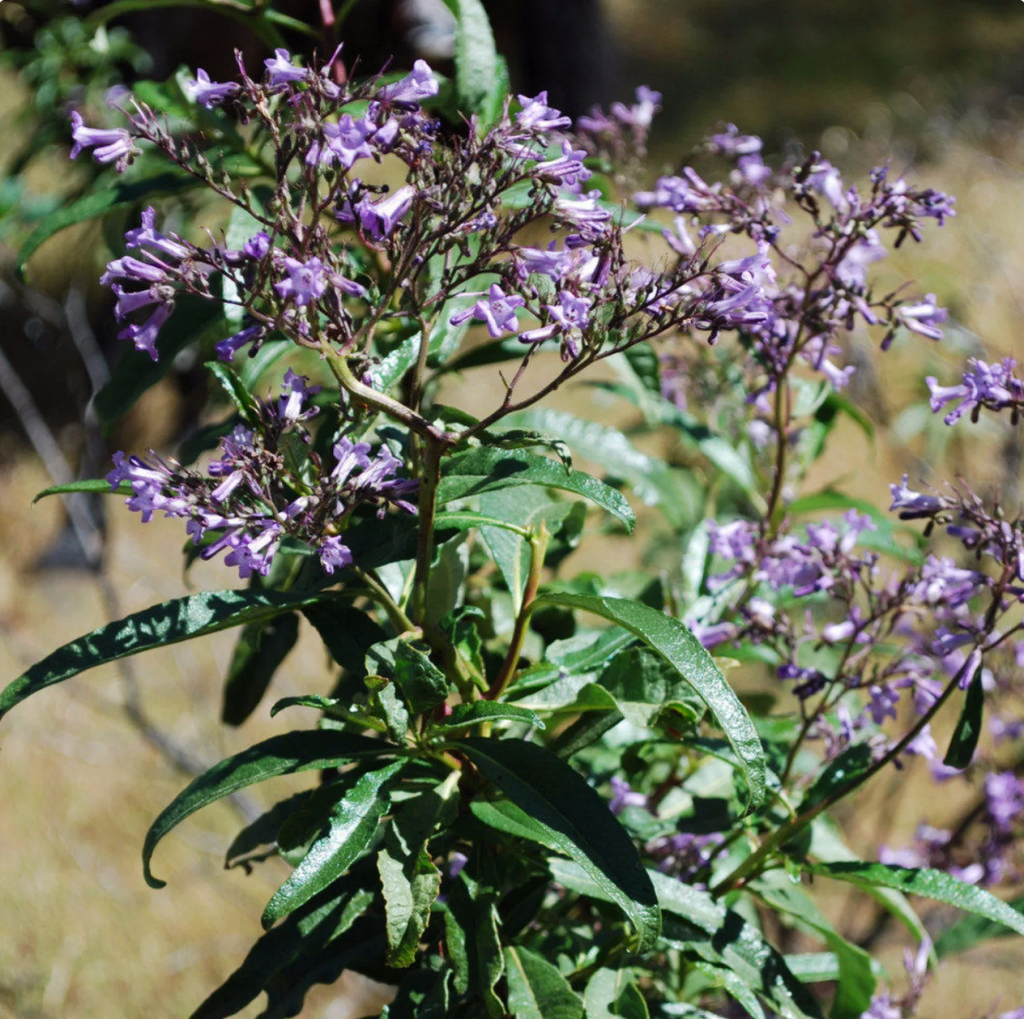
It was once said that “if aspirin were less effective but more expensive, they would sell a lot more of it.” Like aspirin, originally derived from the bark of the willow tree, Eriodictyon californicum has a long history of medicinal uses. The Native American Ohlone, Miwok, Yokuts, Pomo and Salinan, as well as early settlers, used it for a cure-all. The Spanish who came to California were so impressed with the plant that they gave it the name “Yerba Santa”, meaning “holy plant”. The plant was once listed in the official U.S. Pharmacopoeia as a cure for bronchitis, but there’s no money in medicines derived from native plants, so its value remains unproven and it has since lapsed into medicinal semi-obscurity.
Yerba santa is very drought tolerant, but hard to start. It is a pioneer plant, likes disturbed soil, and full sun. An opportunist, it spreads vigorously after any soil disturbance. Seeds stored in the soil for decades germinate readily during the first spring after a fire. Older plants can sprout from their underground rhizomes (suckers), following disturbances such as fire.
The dark green, leathery leaves are covered with a shiny, fragrant resin, as if varnished, and are sticky to touch. They have an odor generally considered unpleasant and bitter, making them unpalatable for most animals. But on chewing, the bitter taste soon becomes sweet and cooling. They make a distinctive tea with a savor of native sage and mint, but can become bitter if steeped too long. An extract of the leaves has been used in baked good, sweets, ice cream and soft drinks!
Medicinally, the leaves are said to make an aromatic pleasant-tasting tonic that reduces spasms, expels phlegm and lowers fevers, and treat diseases of the respiratory system and hay fever. The mashed leaves can be used to treat cuts, wounds, abrasions and swelling on fractures. A decoction of the leaves has been used as a wash for sore areas and tired feet. The plant has been smoked to soothe asthma attacks, or made into a steam bath for the treatment of rheumatism. (But be sure to follow your doctor’s instructions! )
Quote for the Occasion
“A neat and tidy garden is what it looks like – barren and devoid of shelter for bumble bees, mason bees, and so many other pollinators. Leaves and other decaying vegetation are an important part of the habitat that supports a diversity of wildlife. Leaving the leaves is just one way to help beneficial insects! ” – From a UC Davis Article
Guided Tours of the Granada Native Garden are Available
Are you interested in learning about some of the plants that are described in this Newsletter or in the archived issues? One or more staff of the GNG are routinely on duty at the Garden on Mondays and Tuesdays, roughly between 10:00 AM and 12:00 noon. But it isn’t hard to arrange a guided visit at other times. If you are interested in scheduling a visit, just email Jim at JIMatGNG@gmail.com . Or if you have any questions or inquiries, please email Jim at the same address! Directions to the Garden and information about volunteering there can be found by clicking one of the buttons at the top of the first page of this Newsletter.

